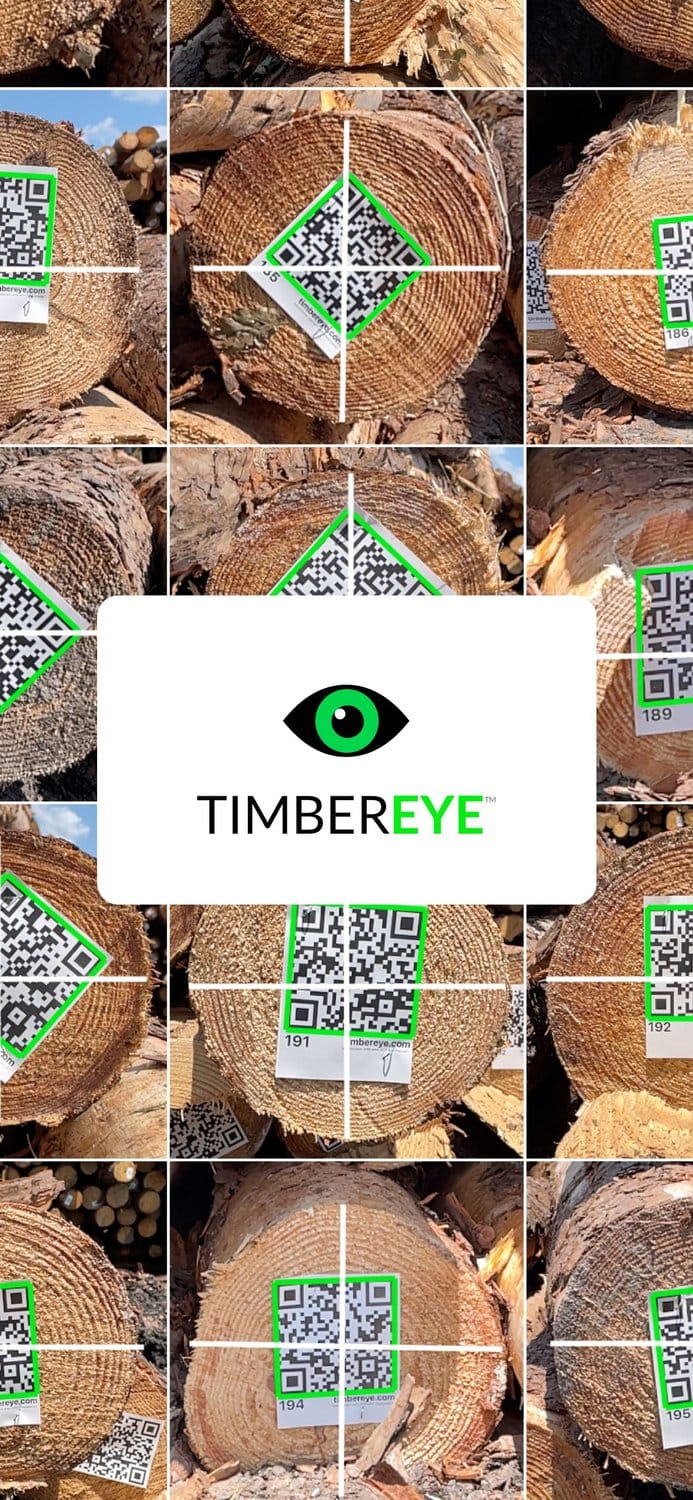

Overview
Faster, safer, and more accurate log scaling
Lumber prices rose drastically during the Covid-19 pandemic. Even as timber supply remained steady, lockdowns or work-from-home orders slowed lumber processing at sawmills. With market price fluctuations, measuring the weight, dimensions, and quality of lumber became more important than ever before. Measuring, or scaling lumber has historically been done manually. Manually scaling lumber is a dangerous process, requiring individuals to work in environments where logs are piled high and people and heavy machinery must work in close proximity. TimberEye provides a mobile application that leverages the latest in computer vision and LiDAR mapping technology to enable lumber suppliers as well as buyers to categorize and scale logs up to 20x faster, more safely and consistently, and with better accuracy.
The Problem
Annotating images for segmentation delayed experimentation
The TimberEye team developed their initial object detection models using YOLOv4 with a dataset of 10,000 images. With this initial model, and the TimberEye LiDAR tools, the TimberEye app delivered highly accurate measurements with an average difference to verified manual measurements of just 0.3cm. Typical human operators will differ from verified measurements by 1.2 - 1.5cm. With the TimberEye app, businesses can get each measurement up to a much higher standard, more quickly and with less labor.
To continue to enhance the app’s scaling capabilities, the team wanted to experiment with an instance segmentation model. TimberEye CEO and Founder Scott Gregg initially attempted to annotate a segmentation dataset on his own. “I labeled the first 1,000 images on my own, and after three long days, I was burned out. Annotating images for segmentation is significantly more challenging and time consuming than annotating images for object detection. I was averaging 100-200 mouse clicks per image instead of 4 and it was a nightmare.” explained Gregg. “After my initial annotation attempts, the model still wasn’t performing. Our team was overwhelmed and stuck, and only 5% of the dataset we needed to annotate was complete,” Gregg concluded.

The Solution
Fast, easy, and quality annotations
Gregg and the TimberEye team decided to try Scale Rapid as early beta testers. “We were lucky to discover Rapid when we did,” said Gregg. “I cannot fathom a faster or easier way to achieve production-quality annotations. Rapid was like magic. We kept kicking the segmentation work to the back burner, and honestly almost abandoned it, but three days after kicking off our project with Rapid, we had all the data we needed in perfect shape. We gave Scale very specific instructions to our use case, requiring them to create tight circular boundaries around the cross section of each log, and ignoring certain information in the periphery. They did an excellent job in no time at all. Now, we just pass things off to Scale and keep focused on the rest of the work we need to do,” explained Gregg. “We just upload images, provide instructions, and follow the process until we get perfect data back. We only have to provide a bit of feedback for the early batches, and do some audits. Other than that, it's just watching the scale flywheel knock out thousands of perfect annotations in hours. They can’t annotate as quickly as we can scale logs, but hey no one can,” joked Gregg.
The Result
Accelerating app development and enhancing log scaling
“Our results from Rapid have been overwhelmingly positive. We deal with a ton of corner cases that are very difficult to cover perfectly. We deal with odd types of damage, mud, moisture, lighting, bark, shadows, a whole number of variables that can throw off a vision model,” said Gregg. Five different humans may also scale the same log five different ways, even though there is only one true way. Some of TimberEye’s earlier vision models were just as opinionated as humans. “We needed to do a better job of covering corner cases, and train out some of the opinions we were seeing. With our segmentation results from Rapid, we are able to apply a much greater level of consistency over a much broader set of the weird cases we encounter, with a lot less opinion in the final result. We no longer have to lose sleep at night about how we will perform after a rainstorm, or with a log getting crushed at the bottom of a pile - all because of Rapid,” Gregg added.
TimberEye is working with some of the largest log exporters in South America and in the US Southeast. The app scales the logs, manages inventory, and also tracks the log’s journey from the forest, onto trucks, into loading facilities, and then on to ships overseas. TimberEye does this for hundreds of thousands of logs and countless shipments each month. It reduces the scaling related labor requirements for several facilities by 50%, improves accuracy by 1.2cm per log, and reduces the time to scale logs by 70-80%. In addition to this, for the first time in the industry, TimberEye is able to quickly give businesses perfect data. “Much like we were delighted when we got our first Rapid batches back, our customers are experiencing the same level of delight when we pass on multi-hundred page packing lists, itemized at the log level, with images of every single log and its measurements. Neither our customers, nor their buyers, have ever had access to data like this before,” explained Gregg. As TimberEye expands into Canada, Europe, and New Zealand, their technology has the potential to not only accelerate and increase the accuracy of log scaling but also reduce injury rates and make it safer for the people working in these industries.






